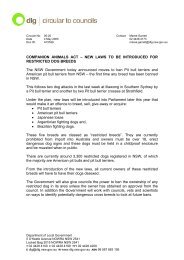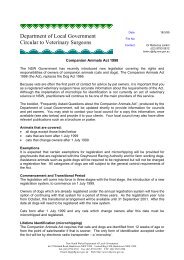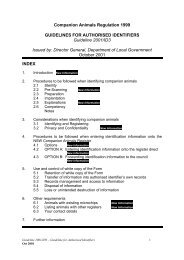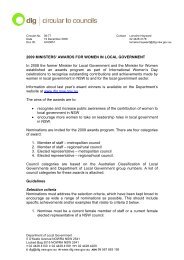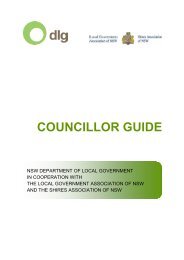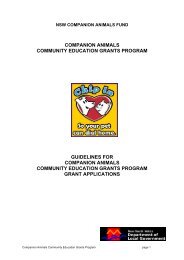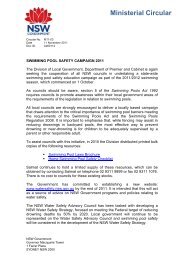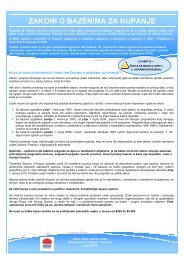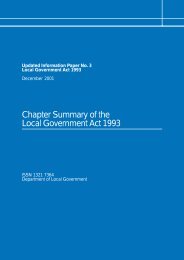Integrated Planning and Reporting Manual - Division of Local ...
Integrated Planning and Reporting Manual - Division of Local ...
Integrated Planning and Reporting Manual - Division of Local ...
Create successful ePaper yourself
Turn your PDF publications into a flip-book with our unique Google optimized e-Paper software.
2. THE COMMUNITY STRATEGIC PLAN<br />
When analysing the information it is important to consider not only broad issues <strong>and</strong> implications,<br />
but also the representation <strong>of</strong> particular groups who may have special needs or issues. These<br />
groups were formerly referred to as ‘target groups’ in the social planning process <strong>and</strong> include:<br />
<br />
<br />
<br />
<br />
<br />
<br />
<br />
<br />
children<br />
young people<br />
people with disabilities<br />
older people<br />
women<br />
Aboriginal <strong>and</strong> Torres Strait Isl<strong>and</strong>er people<br />
people from culturally <strong>and</strong> linguistically diverse backgrounds<br />
people from diverse sexualities<br />
For example, Aboriginal people or people with disabilities may have different housing needs to<br />
those <strong>of</strong> the general community. Giving particular consideration to these groups will help to ensure<br />
that all members <strong>of</strong> the community receive a fair go in planning future services or facilities <strong>and</strong> that<br />
Council meets the requirement to ensure the Plan is founded on social justice principles.<br />
Also consider how community services are interlinked with economic, environmental <strong>and</strong> urban<br />
design issues. This is particularly relevant, for example, if affordable housing is emerging as a key<br />
social issue for your area.<br />
What sort <strong>of</strong> information<br />
In preparing its discussion papers or presentations on key issues, Council should consider both<br />
quantitative <strong>and</strong> qualitative information. For example, there may be crime statistics available for the<br />
local area, but there are also people’s perceptions <strong>of</strong> community safety. Often the two won’t<br />
completely align.<br />
Community feedback might suggest that people feel unsafe when walking local streets at night,<br />
even though crime statistics for the area show there is a very low personal risk involved. The<br />
perception may originate from poor street lighting, seeing groups <strong>of</strong> drunk or disorderly people in the<br />
main street, neighbourhood hear-say, or reports on television or in the local newspaper.<br />
Regardless <strong>of</strong> where the perception came from, it is very real to the people who hold that belief <strong>and</strong><br />
affects the way that they participate in the community.<br />
There will also be some aspects that hold particular or special values for your community which<br />
elevate their significance in the planning process. This might be a particular heritage building, a<br />
natural feature or a memorial park. In these cases, the way people feel about the feature, or the<br />
personal value they place on it, may be more relevant to long-term decision making than the facts<br />
<strong>and</strong> figures that relate to it.<br />
Presenting the information<br />
The effectiveness <strong>of</strong> the Community Strategic <strong>Planning</strong> process relies on the way that information<br />
on issues, impacts <strong>and</strong> possible solutions is presented to the community. The community<br />
engagement process will serve as a testing point for the issues Council has identified – Are these<br />
the matters <strong>of</strong> key concern to the community Are there other issues that should be highlighted As<br />
the community works through the issues, long-term goals will become clearer <strong>and</strong> strategies for<br />
achieving those goals can start to take form.<br />
<strong>Planning</strong> & <strong>Reporting</strong> <strong>Manual</strong> Page 35 <strong>of</strong> 115





